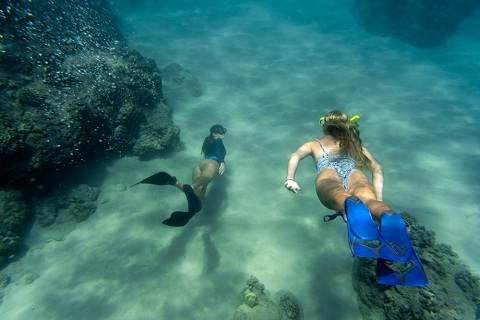Taking photos underwater can be a thrilling experience, offering unique opportunities to capture the beauty of marine life and underwater landscapes. However, it also presents challenges that differ from those encountered in traditional photography. Whether you’re an experienced underwater photographer or a novice looking to dive into this exciting realm, here are some valuable tips to help you take great photos with an underwater camera.
1. Choose the Right Equipment
Selecting the appropriate underwater camera is crucial for achieving high-quality images beneath the surface. Look for a camera specifically designed for underwater use, preferably one with a sturdy housing to protect it from water damage. Consider factors such as resolution, lens quality, and compatibility with underwater accessories like strobes and filters.
2. Understand Underwater Lighting
Light behaves differently underwater compared to on land, affecting color, contrast, and clarity in your photos. As you descend, natural light diminishes, leading to color loss and reduced visibility. To compensate, consider using artificial lighting sources like strobes or video lights to illuminate your subjects effectively. Experiment with different lighting angles and intensities to achieve the desired effect.
3. Master Buoyancy Control
Maintaining proper buoyancy is essential for capturing steady, blur-free images underwater. Practice neutral buoyancy to avoid disturbing marine life or stirring up sediment, which can cloud your shots. Use buoyancy control devices like dive weights or buoyancy compensators to achieve stability and control your depth effectively.
4. Get Close to Your Subject
Water absorbs light and distorts colors, so getting as close to your subject as possible is crucial for capturing clear and vibrant images. Minimise the distance between you and your subject while maintaining a safe and respectful distance to avoid startling or disturbing marine life. Consider using a wide-angle lens to capture expansive underwater scenes while still maintaining sharp focus on your subject.
5. Mind Your Composition
Composition plays a significant role in creating visually appealing underwater photos. Pay attention to elements such as symmetry, leading lines, and negative space to compose compelling images. Experiment with different angles and perspectives to add depth and dimension to your shots. Additionally, consider the rule of thirds to create balanced compositions that draw the viewer’s eye to the focal point of your image.
6. Adjust White Balance
Underwater environments are notorious for causing color distortion due to the absorption and scattering of light. To combat this, adjust your camera’s white balance settings to compensate for the predominant color cast in your underwater scene. Experiment with different white balance presets or manually adjust the color temperature to achieve accurate and natural-looking colors in your photos.
7. Practice Patience and Persistence
Underwater photography requires patience and persistence to master. Take your time to observe your surroundings, anticipate the movements of marine life, and wait for the perfect moment to capture your shot. Be prepared to experiment with different settings and techniques until you achieve the desired results. Remember that practice makes perfect, so don’t be discouraged by initial setbacks.
Conclusion
Taking great photos with an underwater camera requires a combination of technical skill, creativity, and a deep appreciation for the underwater world. By choosing the right equipment, understanding underwater lighting, mastering buoyancy control, and honing your composition skills, you can capture stunning images that showcase the beauty and wonder of the ocean’s depths. With patience, persistence, and a willingness to learn, you can dive into the world of underwater photography and unlock a whole new realm of photographic possibilities.



